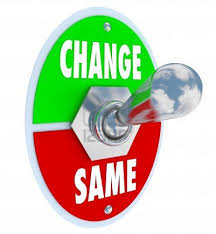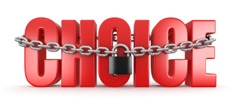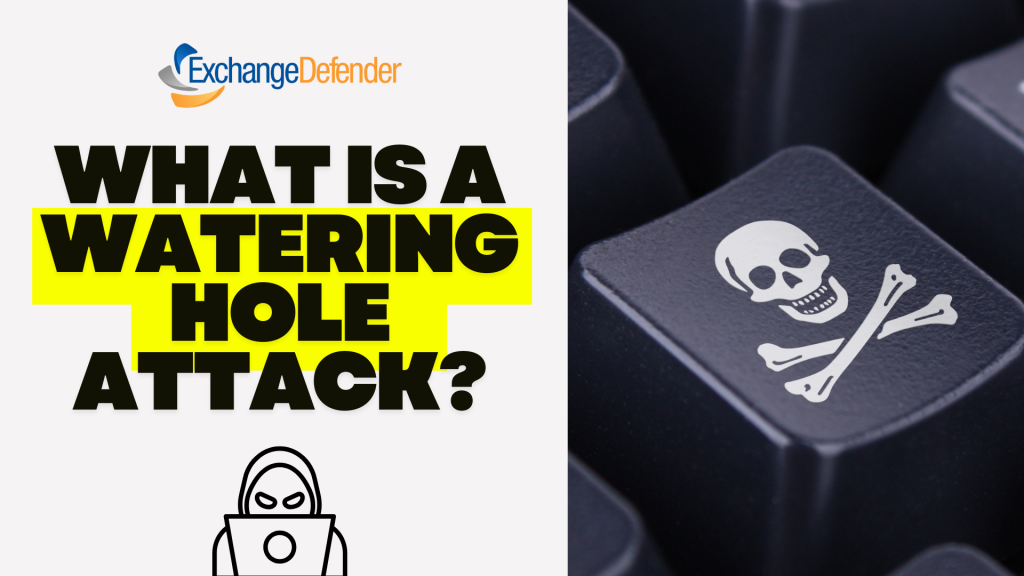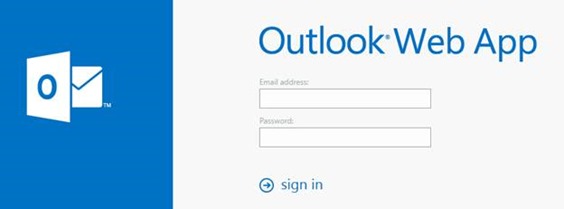ExchangeDefender Unified Webinar
With the summer heat in full swing, our infrastructure upgrades and platform changes that started around Thanksgiving of last year are nearly done. The demand for ExchangeDefender, Shockey Monkey and other services has been way ahead of our projections which has slowed things down a bit but gives us a platform to address the growth we believe will be driven by the next wave of upgrades.
In the past few months we have launched Exchange 2013 and retired Exchange 2007, upgraded ExchangeDefender Compliance Archiving, Encryption, Reporting, Outlook and Destkop Agents, Unicorn/Business Monitoring and retired/upgraded several tons of hardware across our data centers worldwide. Now we’d like to tell you why:
ExchangeDefender Unified Webinar
Thursday, Jul 25th, noon – 1pm
Please take the time to register for the webinar; even if you cannot make it, the recordings will be posted online shortly.
To answer the burning question: No, ExchangeDefender is not migrating with Shockey Monkey or anything of the sort. However, in the past our services (which stretch from business services to development to software services to actual development platform) may have been harder to consume and sell than they should be. I believe we’ve fixed that over the past few months. The big topic now is the unification of everything we do under the same development and integration track so you can easily rely on us for as little or as much service as you need.
I may also mention a few new things we’re up to during the presentation ![]()
Sincerely,
Vlad Mazek
CEO, ExchangeDefender
877-546-0316 x500
To-Do, or To-Don’t: That is the Question

Over the years, I’ve read hundreds of organizational and business books. The problem with the majority of these books is that they regurgitate the same information or have eight updated “new common sense” editions; “How to Organize Your Business! — 8th edition, now including Working off Lists!” (facepalm)
For the most part, the organizational books all have very similar methods for classifying and arranging everything in your personal and business lives. Normally, this process begins by creating and working off a To-Do list–prioritizing and checking off items as they are completed. This process has two man-made, deep-rooted problems:
- There are too many items to complete on the list; and
- There is not enough time to complete the items on the list.
Notice I said man-made problems. I say this because your list should first be filtered, then prioritized. So, let’s look a little deeper into these two excuses…
There are too many items to complete on my list.
When we create lists, we tend to be under dramatic (not stressing the importance of the task enough) or overdramatic (the opposite of what I just said.) Do all the items on your list need to be accomplished today? Are their items on your list that have low priority? If so, remove them. Place those items on the reverse side or on a completely separate list. The goal here is to accomplish the items that need completion by a certain time or day. If you find an item that is neither important or time-sensitive, remove it.
Another good rule of thumb is to create the list with enough detail so others could follow it. If you need to replace a light bulb in your bathroom and know that the only place close enough that sells that particular lightbulb is Home Depot; then on your To-Do list write:
- Go to Home Depot;
- Purchase replacement lightbulb for master bathroom vanity;
- Go home;
- Replace burned out master bathroom vanity bulb with the newly purchased replacement bulb.
Some would call these directions anal-retentive. However, remember what I said earlier: Create the list with enough detail so others could follow it. Some could argue that step 3 could be eliminated. Fair enough. But leave it on the list because I’ll show you how it’s relevant in a few moments. Moving on…
There is not enough time to complete the items on the list.
Bluntly speaking, there are 24 hours in a day. If you can’t accomplish a daily To-Do list in 1,440 minutes, you have bigger time management issues than you think. I understand that life intervenes and things don’t always work out as planned, but you’re probably wasting more time than you think on items that you shouldn’t be.
Prudently, we all should plan for the upcoming day the night before. This allows us time to collect all our thoughts on the subject at hand without wasting precious time the day of trying to create and prioritize lists. If I need to leave the office and run errands, I try to include drive time, completion time, etc. So if I have to run to the post office to pick up an item, I would calculate 15 minutes (including traffic), 5-8 minutes in line, accepting the package, then another 15 minutes driving back to the office. Now underneath that item is where I start creating another list: My To-Don’t List. In this instance, my To-Don’t list would include: Don’t stop at Starbucks! Similarly, if I have to do Internet research on a specific subject: Don’t log into Facebook!
Now, do you remember my light bulb example and how one could argue that step 3. (Go home) could be removed. What if you didn’t go straight home and stopped off at a friends house or went to the driving range. In doing so, you were late getting home, and didn’t think about replacing the burned out bulb in the bathroom–even though you purchased a new bulb that very day. Would you consider this item as completed on your list? No.
We take small deviations during the day that add up to time we should have spent completing our tasks. In reading organizational book after organizational book, I found they do a good job in explaining how to identify and protect your time against “time suckers” such as email and walk-in coworkers. However, these books fail to explain the biggest time sucker is actually yourself. This is where having a To-Don’t list comes into play. After creating your prioritized To-Do list, create a separate list of things you will not do so you can maintain your commitments and complete your To-Do list. It may seems silly to write down items you don’t plan to do. However, it’s been my experience that the items we don’t plan to do take up the most time.
Michael D. Alligood,
Partner Communications Manager
ExchangeDefender | Shockey Monkey
877-546-0316 x707
michael@ownwebnow.com
On the Road Again…
 June has turned out to be a busy month for ExchangeDefender and Shockey Monkey! Thank you all who stopped by our booth during the Autotask Live conference this week. It is always a pleasure to talk to our partners face to face. With that said, ExchangeDefender and Shockey Monkey will be represented at the following events in the month of June:
June has turned out to be a busy month for ExchangeDefender and Shockey Monkey! Thank you all who stopped by our booth during the Autotask Live conference this week. It is always a pleasure to talk to our partners face to face. With that said, ExchangeDefender and Shockey Monkey will be represented at the following events in the month of June:
12th International Cloud Expo
June 10th – June 13th
Javits Center, New York City
ASCII Baltimore
June 12th – June 13th
BWI Airport Marriott
Level Platforms MSP Community Summit
June 17th – June 19th
The Cosmopolitan, Las Vegas
If you are attending any of these events, drop by our booth and let’s talk about your business and how a partnership with ExchangeDefender can assist your company in increasing its service revenues.
If you are unable to attend any of these events, shoot me an email at michael@ownwebnow.com or phone call at 877-546-0316 x707. I’ll be more than happy to answer any questions you have about ExchangeDefender services and our Shockey Monkey platform.
Michael D. Alligood,
Partner Communications Manager
ExchangeDefender | Shockey Monkey
877-546-0316 x707
Is Changing your Logo a Good Idea?
Some businesses change their logo as often as they change their printer ink, while others have maintained the same logo for decades. Branding your company with a good logo can provide your community  with familiarity, awareness of your business, and can help to create loyalty. Understanding how your logo impacts your business and why and when to change it can help you to create a lasting brand image.
with familiarity, awareness of your business, and can help to create loyalty. Understanding how your logo impacts your business and why and when to change it can help you to create a lasting brand image.
A simple search on some of your favorite corporate brands will show you the importance of modifying or changing your logo. Companies like Apple, Pepsi, and just about all-major brands have gone through revisions of their company logo over the years. Though there is no standardized rule for how often to change your logo it is definitely a good idea to do this periodically.
Pepsi for instance appears to be on a roughly ten-year cycle for their logo. This has worked pretty well. When you look at the history of the logo image, you can see how it has changed with the times. The logo reflects the period and you can easily see how certain versions now look dated. This is what can happen to your logo as well. Looking at just about any other corporate logo history will have this same outcome of some previous logos looking dated.
A logo and brand refresh can be good for business and can breathe new life and excitement into a business. Though we would caution complete brand makeovers as these can sometimes muddy a brand and confuse customers, and should only be done when it is absolutely necessary. Instead, look at the top corporate companies and take a cue from them. Most of these logos have slight but impactful changes that give the brand a new and fresh approach.
Personally I like the ten year approach to a logo change, though in the IT and MSP world, a five year schedule may be more effective given the amount of change in the products and industry. Changing your logo more often than this may not compliment the goal of brand awareness, and actually can potentially hurt business.
Sun-Sational Summer Savings Promotion!!!
This summer we are going to be running an ExchangeDefender Sun-Sational Summer Savings Promotion! When you use the promotional code you will get Compliance Archiving and Corporate Encryption for 50% OFF! Compliance Archiving will be priced at $2.00/user/month and Corporate Encryption at $0.50/user/month. When the promotional code is used to set up new accounts they will be grandfathered in at this price for the life of the active account.
Compliance Archiving has recently gotten a facelift! With the new design there are many improvements! There is a completely new and improved UI that is easy to use and navigate through. Also, we have implemented paging into the product and fine tuned the search functionality. In addition, there are more customizable options to better fit your needs. This is a solution that you should really add to your solution set!
ExchangeDefender Corporate Encryption provides an easy and seamless way for organizations of all sizes to implement content protection and comprehensive control over information being sent through email. It includes pattern-matching encryption, comprehensive reporting, corporate encryption mechanisms, and lexicon dictionaries. Corporate Encryption is very easy to promote and it is also extremely easy to add to your solutions set and offer because there are so many benefits associated with using it. A great thing to point out about Corporate Encryption is the ability to have more control. You can better monitor your network and be aware of things that are going on. You can define keywords and patterns, so that when certain things that you are concerned about happen you will know about them and be alerted. There are also legal and HR benefits of protecting both company data and employees and prevent important data from being leaked or sent out. Both Compliance Archiving and Corporate Encryption are compliant with SOX, HIPAA, SEC and local government requirements to provide you with more protection and powerful auditing.
The promotion will be running all summer from June 1st through July 31st! Use the coupon code listed in the image when signing up a new account and enjoy your savings!
For more information refer to our ExchangeDefender Promotions page.
Stephanie Hasenour
VP Marketing, ExchangeDefender
stephanie@ownwebnow.com
Limiting the Consumer’s Choices
 Social psychologist and Columbia University Business School professor, Dr. Sheena Iyengar, is an expert in choice. By that, I mean she has dedicated her life to understanding the patterns of human decision-making and revealing its contradictions. After leading a 15-year study on the subject, she authored a book on the topic titled, “The Art of Choosing.” In her book, she talks about how psychological, biological, and cultural behaviors steer us in making decisions of choice. “We’re born with the desire, but we don’t really know how to choose,” wrote Dr. Iyengar. From her numerous studies, Dr. Iyengar concluded that when given too many option, we are ten times more likely to take action when choice is limited. Anyone who’s ever been to a convenient store for a candy bar will tell you that! I have left stores because the assortment of items was so large, I didn’t know which selection to make.
Social psychologist and Columbia University Business School professor, Dr. Sheena Iyengar, is an expert in choice. By that, I mean she has dedicated her life to understanding the patterns of human decision-making and revealing its contradictions. After leading a 15-year study on the subject, she authored a book on the topic titled, “The Art of Choosing.” In her book, she talks about how psychological, biological, and cultural behaviors steer us in making decisions of choice. “We’re born with the desire, but we don’t really know how to choose,” wrote Dr. Iyengar. From her numerous studies, Dr. Iyengar concluded that when given too many option, we are ten times more likely to take action when choice is limited. Anyone who’s ever been to a convenient store for a candy bar will tell you that! I have left stores because the assortment of items was so large, I didn’t know which selection to make.
Have you every been out to a restaurant, looked at the menu, been so confused by all the offerings, and responded, “I’ll just have…?” To most people, that statement would indicate that you made a choice you were happy with. However, the word “just” in this case, subconsciously indicates that:
1. You are not 100% happy with your selection, and/or;
2. You don’t care about your selection.
Now let’s bring this subject into your business. Most of you claim to be Managed Service Providers; and as such, you probably have different levels of “packages” you provide to potential clients. After reviewing them all, do you find your clients stating, “I will just call you when we have problem…?” This could be due to a few things. One of reasons they chose not to enter into an agreement with you could simply be price. Another reason could be the potential Managed Service client is confused by choices you are offering—and not willing to make a mistake, decides not to purchase at all. In her book, Dr. Iyengar described the magic number—seven—at which more turns into less. This is based on a previous study that showed that our senses can easily distinguish five to nine objects of perception. Now, I am not recommending that your have five to seven different offering for potential clients to choose from. I am saying that if you are offering a lot of different services, combine them into packages that don’t exceed five to nine different offerings. I found that the magic number of Managed Services packages should be around two to four offers. This gives an adequate number to choose from—while not overloading the potential client.
This information should not only be considered for Managed Services offerings, but in everything you sell—from hardware and software. If you business still sell computers to it’s clientele, offer two to four different types. Then categorize them accordingly: Home use, business use, gamers, etc. It is easy to argue that limiting the choices of your clients will cause low sales numbers. However, overloading them with choices will cause the same effect. Finding a balance of offerings will still allow you to suggestion choices while keeping you clients corralled just enough so they don’t feel overburden in making a decision.
Michael D. Alligood
Partner Sales & Support, ExchangeDefender & Shockey Monkey
michael@ownwebnow.com
(877) 546-0316 x707
SRV and TXT Record Support Coming Soon…
 As more and more services utilizing SRV Technology come online we have to adjust to the demand. Currently, we accommodate these via a support request, but as the technology spreads that is less convenient to you, your clients, and even us.
As more and more services utilizing SRV Technology come online we have to adjust to the demand. Currently, we accommodate these via a support request, but as the technology spreads that is less convenient to you, your clients, and even us.
As such, we have been working on the backend of the code and it is pretty set. We anticipate having this live next week. Obviously no code is perfect, so if you find anything funky please let me know.
Carlos Lascano
VP Support Services, ExchangeDefender
carlos@ownwebnow.com
(877) 546-0316 x737
Discontinuing Exchange 2007 in UK and EU
As previously mentioned we have been forced to discontinue the Exchange 2007 service worldwide. The last day of Exchange 2007 service on our UK and Euro infrastructure will be July 31 slightly over two months from today. We have been reaching out to our partners to schedule and facilitate the migration to Exchange 2010 (or other arrangements) and I’m thankful that so many of you have been able to make a quick switch and upgrade your clients. If you haven’t had the opportunity yet we will be calling, emailing, texting and opening up support tickets to get this job done in a way that doesn’t interrupt client operations.
How does the migration work
The whole backend process is managed by us and facilitated / supported around the clock. So please work with our team to assure a smooth transition.
As the service provider you need to modify clients Autodiscover record (to point to new servers) and restart clients Outlook. After the restart click on Repair Profile and Outlook will automatically switch itself to the new infrastructure.
Is there any way to stay on Exchange 2007?
Technically, yes, but we do not recommend it.
Exchange 2007 will be discontinued worldwide. Just as with Exchange 2000, Exchange 2003 and Exchange 2007 we will still provide the service to the clients on these platforms that require legacy service from our United States legacy platforms. We understand that clients may have line of business applications that require legacy access to Exchange and may not be able to make a quick transition.
Exchange legacy platform is provided on a best-effort basis only, not under our standard SLA. As such the service comes with no uptime guarantee and certain functionality can become restricted without notice if it becomes a security concern (unpatched security issue becomes exploited in the wild). We have made arrangements with our clients in the past for longer term legacy support but please do not consider this as a viable alternative to moving to the new platform.
Will this affect my other services or LiveArchive?
Your ExchangeDefender services will not be affected – LiveArchive, encryption, Compliance Archiving, password policies, two factor password authentication and enterprise services will not be impacted by the infrastructure switch.
Do I have to export all client mail and import it back again?
No, mailbox is migrated on the backend and the only thing you need to do is restart Outlook and repair profile.
We are here for you, please give us a ring and let us help with the move. Call us or open a ticket or email us and let’s go!
Sincerely,
Vlad Mazek
CEO, ExchangeDefender
877-546-0316 x500
Hosted Exchange 2013
We now offer the most recent version of Hosted Exchange available with Outlook 2013!
Our network engineers have spent the last few months designing, testing and implementing the network infrastructure for this new version of Hosted Exchange. This new version comes with all the latest and greatest feature sets, along with a new look and feel.
We have also fully integration this new version (Exchange 2013) into our automatic provisioning process. So you can now order this product directly through our website and have the account(s) provisioned and online within minutes!
How do I sign up for Hosted Exchange 2013?
First if you are not already a partner with us, visit:
http://www.exchangedefender.com/partner_application.phpIf you are an existing partner, visit:
(Once signed in, click on Service Manager-> Hosted Exchange)
https://support.ownwebnow.com
Hank Newman
VP, Development
hank@ownwebnow.com
Are You Really The Boss?
 IT business owners have many reasons for starting their own companies. Some were formerly employed in the field, others bought franchises, and some just love technology. Whatever the reason, most had a yearning to be their own boss. This, in theory, has afforded them to make their own hours, manage staff, and be the overall decision maker for their business.
IT business owners have many reasons for starting their own companies. Some were formerly employed in the field, others bought franchises, and some just love technology. Whatever the reason, most had a yearning to be their own boss. This, in theory, has afforded them to make their own hours, manage staff, and be the overall decision maker for their business.
All of this sounds great but, as much as we would like to believe that the business owner is the boss, the reality is that they just might not be. Now I know what you are thinking; the “wife” is the boss! Though this may also be partially true, the real boss is the customer.
Here are the reasons why:
Hiring and Firing – The customer hires you, and just like you can fire a customer or employee, the customer can fire you.
Paycheck – You and your employee’s paycheck’s come from the customer.
Products – Customers generally dictate the types of products you carry whether you are vertical specific or horizontal.
Managing Staff – Often times the customer is your eyes and ears in the field. Based on complaints or praise from them, helps to determine your employee’s status in the company.
Hours – I don’t think any IT professional would argue that the customer dictates your hours. For those of you who have been up at 2:30 in the morning working on a server down issue or some kind of issue or outage can attest to that.
So maybe the customers are at least the co-bosses. Without them you have no business! Treat them like a boss in your business. Seek input just like you would a business partner and watch your customer relationships build. By treating your customers like a boss you will earn respect and definitely earn loyalty.
Frank Gurnee
VP, Channel Services, ExchangeDefender
(877) 546-0316 x4777
frank@ownwebnow.com






